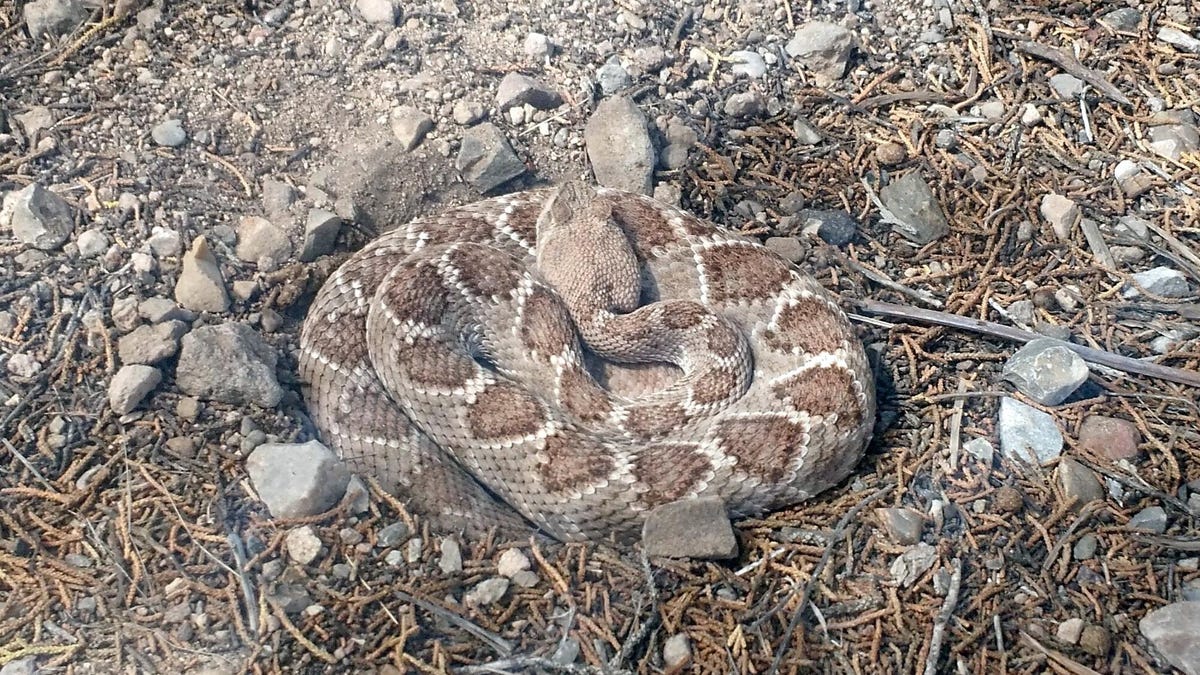Rattlesnakes may be one of the only winners of climate change crisis
The heat-loving reptiles could thrive in warmer temperatures.

A rattlesnake curls up at Kasha-Katuwe Tent Rocks National Monument in New Mexico.
The climate change news has been bad for humanity. Drought. Warmer temperatures. Rising sea levels. Wildfires. Extreme weather. There may be at least one denizen of Earth that could be OK with this mess: rattlesnakes.
A study led by researchers at California Polytechnic State University suggests the venomous snakes commonly found in the US Southwest could benefit from a bump in heat. The paper is published in the journal Ecology and Evolution.
Snakes are cold-blooded animals, which is why they can often be seen sunning themselves to warm up for activity. The team found rattlesnakes have a preferred body temperature of 86-89 degrees Fahrenheit (30-32 degrees Celsius) but reaching that temperature in nature can be a challenge. Coastal rattlesnakes had an average body temperature of 70 degrees (21 degrees Celsius), while inland rattlers logged in at 74 degrees Fahrenheit (23 degrees Celsius).
Lead author and graduate student researcher Hayley Crowell found the result surprising. "There are a lot of ecological pressures in nature that could prevent rattlesnakes from basking, such as the risk of increased exposure to predators," Crowell said in a Cal Poly statement on Tuesday. "A warmer climate may help these snakes heat up to temperatures that are more optimal for digestion or reproduction."
But what if climate change reduces the number of prey animals, like rodents? Turns out rattlers are incredibly efficient when it comes to feeding requirements. "To subsist, an adult male rattlesnake needs only 500-600 calories for an entire year, which is about one ground squirrel, the equivalent of only about half a large burrito," Cal Poly said.
While rattlesnakes may be known for catching and eating small animals on the ground, they're also on the menu for other predators, including birds of prey and other snakes. If rattlesnakes boom, it could have an impact on other animals.
"We are so used to climate change studies that forecast negative impacts on wildlife," said Crowell. "It was interesting to see such starkly different findings for these snakes."
If booming rattlesnake populations isn't your idea of good time, let that be motivation to do what you can in the battle against climate change.

